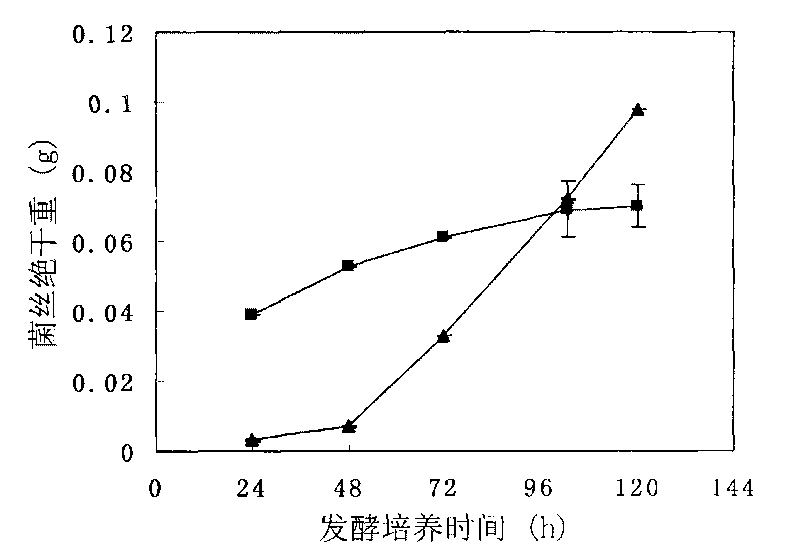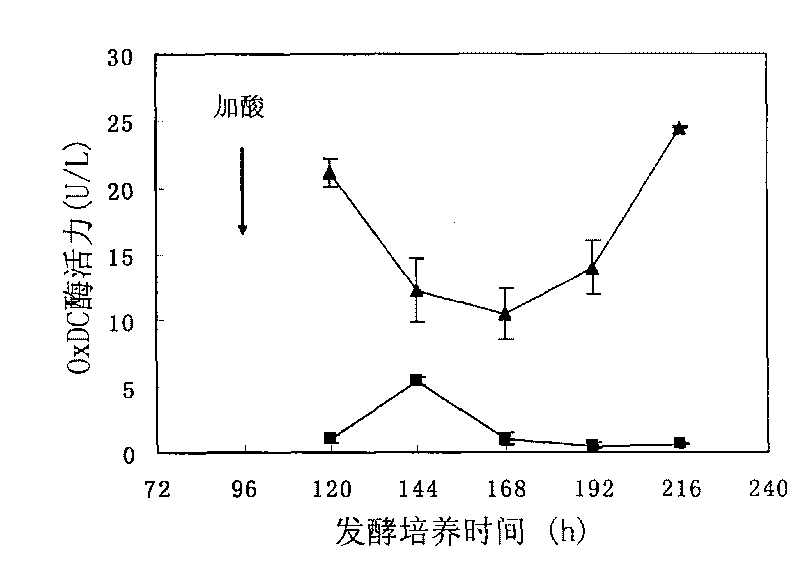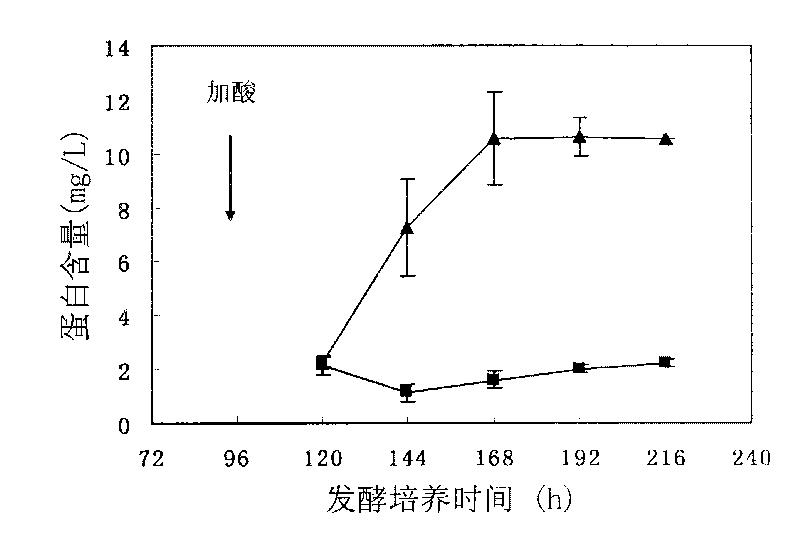Method for inducing oxalate decarboxylase by coriolus versicolor cultured by corn stalk carbon source
The technology of oxalate decarboxylase and Coriolus versicolor is applied in the field of preparation of oxalate decarboxylase, can solve the problems of increased greenhouse effect, air pollution and the like, and achieves the effects of simple method, easy operation and low price
- Summary
- Abstract
- Description
- Claims
- Application Information
AI Technical Summary
Problems solved by technology
Method used
Image
Examples
Embodiment 1
[0027] Production of Coriolus versicolor from corn stalk hydrolyzate (the initial pH value of the medium is 5.0)
[0028] Weigh the fully ground corn stalks, add a sulfuric acid solution with a concentration of 5% at a solid-to-liquid ratio of 1g: 12ml, soak the corn stalk powder in a dilute sulfuric acid solution for 10 hours, place it in a high-pressure cooker, and heat it at 121°C , reacted for 30 minutes, filtered to remove the corn stalk residue, and obtained the corn stalk hydrolyzate for later use. The content of reducing sugar in corn stalk hydrolyzate was determined by DNS method (glucose was used as the standard sugar), and it was stored at 4°C for future use. Add corn stalk hydrolyzate containing 1g reducing sugar (calculated as glucose) to every 50mL medium, then add 0.15g peptone, 0.05g potassium dihydrogen phosphate, 0.025g MgSO 4 ·7H 2 O, 0.01g Na 2 HPO 4 12H 2 O, and 50 μL of trace elements (the formula of trace elements is: FeSO 4 ·7H 2 O 10g / L, MnSO 4...
Embodiment 2
[0031] Production of Coriolus versicolor from corn stalk hydrolyzate (the initial pH value of the medium is 5.0)
[0032] Weigh the fully ground corn stalks, add a sulfuric acid solution with a concentration of 3% at a solid-to-liquid ratio of 1g: 8ml, soak the corn stalk powder in a dilute sulfuric acid solution for 10 hours, place it in a high-pressure cooker, and heat it at 150°C , reacted for 60 minutes, filtered to remove corn stalk residues, and obtained corn stalk hydrolyzate for later use. The content of reducing sugar in corn stalk hydrolyzate was determined by DNS method (glucose was used as the standard sugar), and it was stored at 4°C for future use. Add corn stalk hydrolyzate containing 1g reducing sugar (calculated as glucose) to every 50mL medium, then add 0.15g peptone, 0.05g potassium dihydrogen phosphate, 0.025g MgSO 4 ·7H 2 O, 0.01g Na 2 HPO 4 12H 2 O, and 50 μL of trace elements (the formula of trace elements is: FeSO 4 ·7H 2 O 10g / L, MnSO 4 ·H 2 O...
Embodiment 3
[0035] Production of Coriolus versicolor from corn stalk hydrolyzate (the initial pH value of the medium is 5.0)
[0036] Weigh the fully ground corn stalks, add a sulfuric acid solution with a concentration of 8% at a solid-to-liquid ratio of 1g: 15ml, soak the corn stalk powder in a dilute sulfuric acid solution for 10 hours, place it in a high-pressure cooker, and heat it at 100°C , reacted for 60 minutes, filtered to remove corn stalk residues, and obtained corn stalk hydrolyzate for later use. The content of reducing sugar in corn stalk hydrolyzate was determined by DNS method (glucose was used as the standard sugar), and it was stored at 4°C for future use. Add corn stalk hydrolyzate containing 1g reducing sugar (calculated as glucose) to every 50mL medium, then add 0.15g peptone, 0.05g potassium dihydrogen phosphate, 0.025g MgSO 4 ·7H 2 O, 0.01g Na 2 HPO 4 12H 2 O, and 50 μL of trace elements (the formula of trace elements is: FeSO 4 ·7H 2 O 10g / L, MnSO 4 ·H 2 ...
PUM
 Login to View More
Login to View More Abstract
Description
Claims
Application Information
 Login to View More
Login to View More - R&D
- Intellectual Property
- Life Sciences
- Materials
- Tech Scout
- Unparalleled Data Quality
- Higher Quality Content
- 60% Fewer Hallucinations
Browse by: Latest US Patents, China's latest patents, Technical Efficacy Thesaurus, Application Domain, Technology Topic, Popular Technical Reports.
© 2025 PatSnap. All rights reserved.Legal|Privacy policy|Modern Slavery Act Transparency Statement|Sitemap|About US| Contact US: help@patsnap.com



